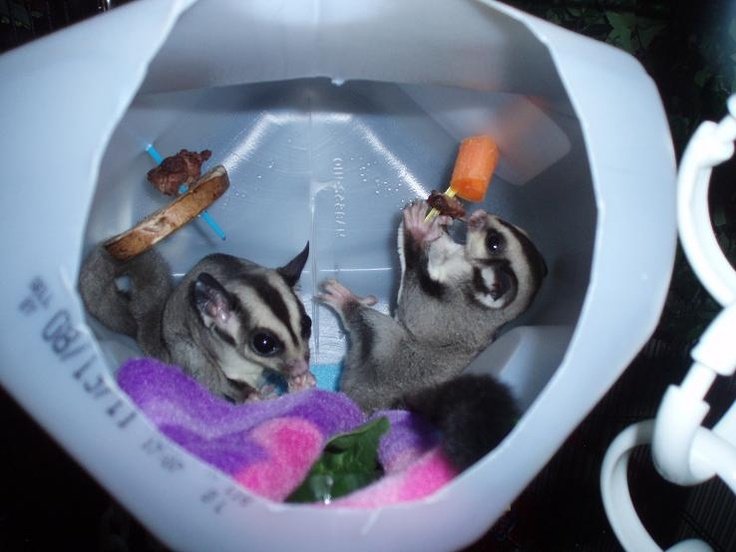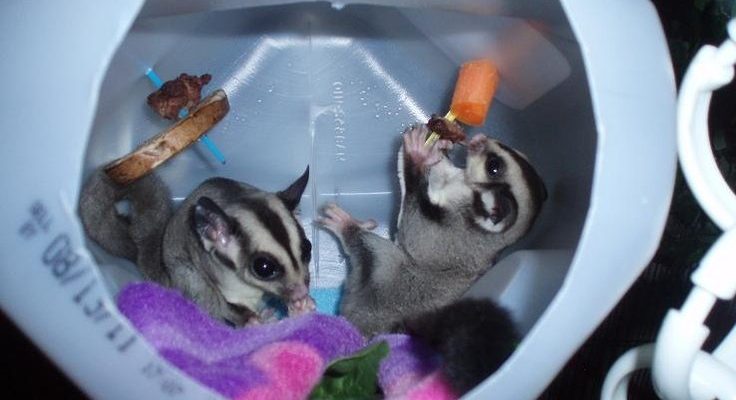
So, what exactly is enrichment? Think of it like creating a mini-adventure playground for your sugar glider. It’s not just about physical toys; it’s about creating an environment where they can explore, play, and express their natural behaviors. It’s crucial because boredom can lead to stress and behavioral issues. Let’s dive into the best ways to keep your sugar glider entertained and content!
Why Enrichment Is Essential for Sugar Gliders
Enrichment provides sugar gliders with mental stimulation and physical exercise. In the wild, these critters are naturally inquisitive, constantly exploring their surroundings. Without the right stimulation, they can become bored, which might lead to negative behaviors like biting, excessive vocalization, or even depression.
By offering a variety of enrichment options, you’re encouraging your sugar glider to use their natural instincts. Think of it as giving them a job or purpose. Not only does this keep them active, but it promotes their overall well-being. Plus, a happy sugar glider means a happier you as an owner!
Types of Enrichment for Sugar Gliders
You might be wondering what kinds of enrichment your sugar glider needs. Here are a few key categories to consider:
- Physical Toys: These include climbing structures, tunnels, and ropes that encourage movement and agility.
- Mental Stimulation: Puzzle toys or treat-dispensing devices can challenge your glider’s brain and keep them engaged.
- Social Interaction: Sugar gliders are social creatures. Spending time with them is one of the best forms of enrichment.
- Environmental Enrichment: Changing their habitat occasionally can provide new scents and sights for exploration.
Introducing a mix of these types can create a well-rounded play environment. Think of it like a buffet—variety is key to keeping things exciting!
Choosing the Right Toys for Your Sugar Glider
When it comes to toys, it’s important to select ones that are safe and suitable for your sugar glider’s needs. Avoid anything small that could be swallowed or made from toxic materials. Look for toys specifically designed for small pets, as they often have the right size and safety features.
Here’s a quick list of popular toy types:
- Chew Toys: Sugar gliders love to gnaw. Look for wooden toys or those made from safe materials.
- Tunnels: These create a fun exploration area and encourage climbing.
- Hammocks: Every glider enjoys a cozy spot to nap and relax. Hammocks can provide comfort and security.
- Interactive Toys: Toys that require your sugar glider to solve puzzles or find hidden treats can be really engaging.
Try rotating the toys every few weeks to keep things fresh! It’s like spring cleaning for their playtime.
Setting Up a Sugar Glider Play Area
Creating a designated play area for your sugar glider can make a huge difference. A safe space for them to explore, climb, and glide is essential. Here are some tips for setting up this environment:
1. Secure the Space: Make sure the area is free from hazards. Remove anything that could harm your sugar glider, like small objects or toxic plants.
2. Include Climbing Options: Use shelves, branches, and ropes to create a vertical space where your glider can climb and glide freely.
3. Incorporate Hiding Spots: Sugar gliders love to feel secure. Add boxes or small tunnels where they can hide and feel safe.
4. Add Interactive Elements: Think about including toys that require your sugar glider to interact or problem-solve. Maybe a treat hidden in a puzzle feeder?
By tailoring the play area to their natural instincts, you’ll create an engaging environment for your furry friend.
Social Interaction: The Best Enrichment
Sugar gliders thrive on social interaction, whether with their owners or other sugar gliders. They’re incredibly social animals, and isolation can lead to loneliness, which can negatively affect their health. Spend quality time with your glider by handling them gently and letting them interact with you. Here are some ideas for bonding:
– Playtime: Set aside time daily for play. Let them explore your shoulder or lap, and offer them toys to play with during this time.
– Training Sessions: Believe it or not, sugar gliders can be trained. You can teach them simple tricks or how to come when called, which can be a fun bonding experience.
– Multi-Pet Households: If you have more than one sugar glider, make sure they have opportunities to socialize with each other. They often groom, cuddle, and play together.
Building a strong bond with your sugar glider enhances their happiness and overall quality of life. You might even find they become less shy or skittish over time!
DIY Ideas for Sugar Glider Enrichment
If you’re feeling crafty, why not create some of your own enrichment toys? DIY projects can be economical and fun! Here are a few ideas to get you started:
1. Foraging Toys: Use cardboard tubes from paper towels and fill them with treats. Seal the ends with a safe material, and let your sugar glider figure out how to get to the goodies inside.
2. Treetop Gym: Create a climbing gym with branches or dowels attached to a safe base. You can hang toys from the branches to encourage exploration.
3. Hide and Seek: Take small boxes, cut holes in them, and place treats or toys inside. Let your sugar glider discover the surprises hidden away.
4. Fabric Toys: Sew or tie together pieces of safe fabric to create a soft toy. Your sugar glider can chew, cuddle, or carry it around.
DIY enrichment options are often more affordable than store-bought versions and can promote creativity and fun in your glider’s life.
Monitoring Your Sugar Glider’s Behavior
Keeping an eye on your sugar glider’s behavior is important. It can guide you in knowing what they enjoy and what might be too challenging or unenjoyable for them. Here are some signs to look out for:
– Playfulness: If your sugar glider is active and exploring, you’re likely providing good enrichment.
– Boredom Signs: If they seem lethargic or uninterested, it may be time to switch up their toys or environment.
– Social Engagement: Watch how they interact with you and their toys. Healthy social behavior is a great indicator of a happy glider.
Regular check-ins can help you understand your sugar glider’s needs and adapt their enrichment plan accordingly.
In conclusion, keeping your sugar glider happy through enrichment and toys is all about understanding their natural instincts and providing the right environment. With a mix of physical toys, social interaction, and a touch of creativity, you can create an engaging and stimulating atmosphere for your furry friend. Remember, a happy sugar glider means a joyful home for both of you! So go ahead, start building that play paradise, and enjoy watching your little buddy thrive.

